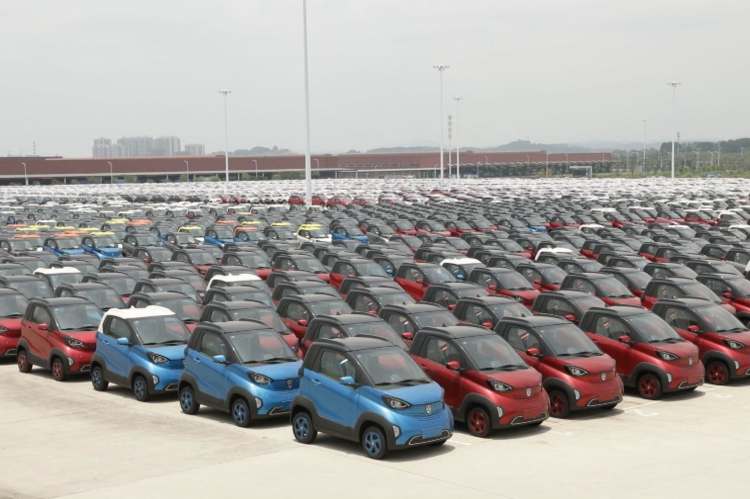
In the global race for electric vehicle (EV) supremacy, China has emerged as the undisputed frontrunner. Once a follower in automotive innovation, it now poses the biggest challenge to Tesla, the industry’s original disrupter. Homegrown firms such as BYD, Xiaomi, and Li Auto have combined aggressive pricing, technological sophistication, and state support to outpace Tesla—especially in the Chinese market, the world’s largest for EVs. China’s dominance is no longer confined to the domestic sphere; it is steadily reshaping the global auto industry.
China’s EV transformation has been over two decades in the making. From early investments in research and manufacturing in the 2000s, the country has built scale and efficiency. By 2024, China accounted for nearly 40% of global EV sales, with 13 million electric and hybrid vehicles sold that year.
READ | US tariff shock opens up opportunities for India
BYD, which began as a battery maker in 1995, has become a symbol of this shift. In the first half of 2025, it sold 2.1 million new energy vehicles (NEVs), including over a million battery electric vehicles (BEVs). In contrast, Tesla sold 720,803 BEVs during the same period. BYD’s vertical integration—from battery production to cargo shipping—enables it to keep costs low. Some of its models retail for under $10,000 in China, compared to $42,990 for Tesla’s base Model 3 in the U.S.

Similarly, Xiaomi’s SU7, launched in 2024, undercuts the Model 3 by roughly $2,500 in China, offering a larger battery and superior in-car features such as heads-up displays. These price differentials, coupled with rapid innovation, are winning over consumers.
EVs as consumer electronics
What sets Chinese EVs apart is their approach to vehicle design and user experience. While Tesla emphasises minimalist aesthetics and autonomous driving, Chinese firms treat EVs as extensions of the consumer electronics ecosystem. Features once considered luxury—augmented reality displays, in-car refrigerators, and roll-down projector screens—are becoming standard in models from Li Auto and Huawei-backed Aito.
This smartphone-like approach to car design resonates with Chinese consumers who prize entertainment and tech integration. Tesla’s functionalist design, by contrast, appears austere and culturally disconnected.
The battery edge
Battery technology—accounting for roughly 40% of an EV’s cost—is another area of Chinese strength. The Blade battery, developed by BYD, offers durability and cost-efficiency and has been adopted by Tesla and Toyota for some models. Chinese firms are also compressing vehicle development cycles to as little as 18 months, compared to the typical five years taken by foreign brands. This speed allows them to push out tech-forward models with regularity.
China’s ascendancy in EVs is the result of deliberate industrial strategy. Between 2016 and 2022, the Chinese government poured $57 billion into the sector through subsidies, tax breaks, and consumer incentives. The result has been a fiercely competitive market, with more than 100 EV models launched in 2024 alone.
Tesla’s entry into China with its Shanghai Gigafactory in 2020 was a catalyst for local players. The so-called “catfish effect”—where the presence of a strong competitor spurs incumbents to innovate—played out as Chinese firms responded with speed and agility. Now, that effect has turned on Tesla. In January 2025, Xiaomi delivered 22,000 SU7 units compared to Tesla’s 8,000 Model 3s in China. Tesla’s share of China’s NEV market has slipped from nearly 9% in 2024 to 6.5% in the first seven months of 2025.
Lessons for India
China’s EV story holds important lessons for India. Beijing’s consistent policy support—through subsidies, infrastructure investment, and targeted industrial policy—has enabled local firms to build robust supply chains and achieve scale. This policy-driven cost advantage is one that Tesla cannot easily replicate.
India, too, must adopt a long-term, strategic approach to EVs, not just as a climate solution but as an opportunity for industrial and technological leadership. The development of battery manufacturing, charging infrastructure, and local component ecosystems should be central to this strategy.
The global push and Tesla’s bind
Chinese EV makers are now looking beyond domestic dominance. BYD, Chery, and Great Wall Motor are expanding aggressively in Southeast Asia, Latin America, and Europe. BYD alone exports to over 80 countries and is investing in R&D centres, warehouses, and service hubs across continents. In Europe, Chinese EVs captured 8% of market share in 2023, up from less than 1% in 2019—despite rising tariff barriers.
Tesla, meanwhile, faces a narrowing window. With limited product diversity and higher price points, it is ill-suited for price-sensitive markets such as India and China. Its cultural fit and innovation cycle appear sluggish next to Chinese competitors. While tariffs in the US and Europe may offer temporary protection from Chinese imports, this buffer may not last.
The shift underway in the EV sector marks a deeper reordering of the global automotive value chain. China is no longer just a manufacturer of cheap goods—it is now a laboratory for next-generation mobility. The future of the EV industry is being designed and built in Shenzhen, not Silicon Valley.
For Tesla and other Western automakers, the challenge is to adapt or fall behind. For countries like India, the challenge is to learn from China’s playbook before the opportunity to build domestic champions vanishes. The EV revolution may have started in the West, but its next chapter is being authored in the East.
